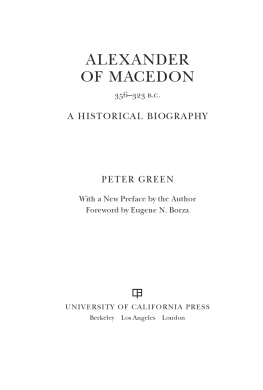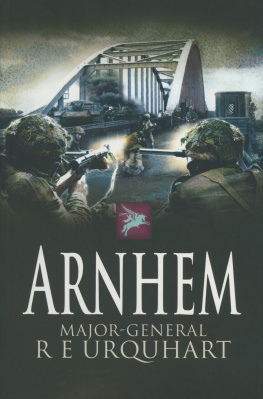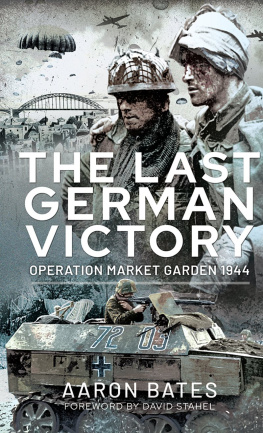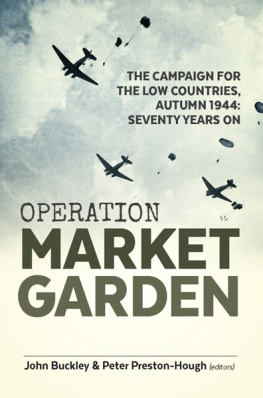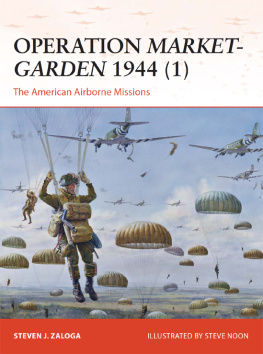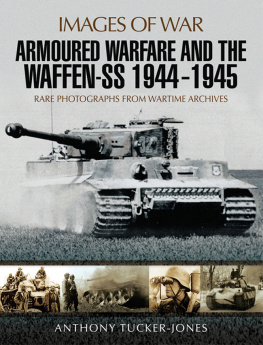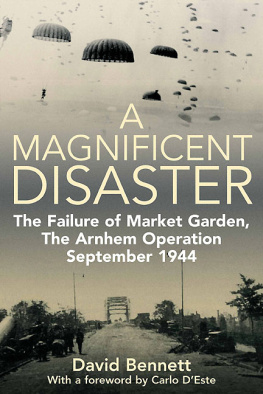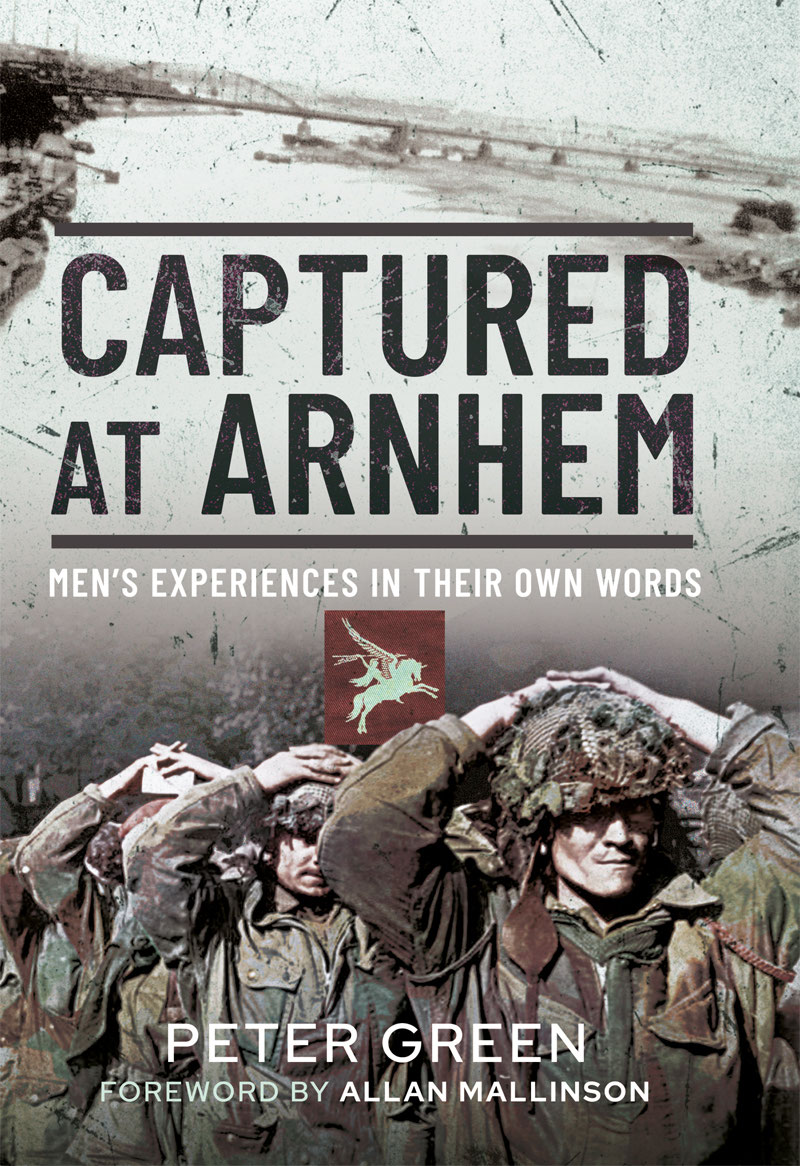CAPTURED AT
ARNHEM
CAPTURED AT
ARNHEM
Mens Experiences in Their Own Words
Peter Green
First published in Great Britain in 2022 by
PEN AND SWORD MILITARY
An imprint of
Pen & Sword Books Limited
Yorkshire Philadelphia
Copyright Peter Green, 2022
ISBN 978 1 39908 837 4
ePUB ISBN 978 1 39908 838 1
Mobi ISBN 978 1 39908 838 1
The right of Peter Green to be identified as Author of this work has been asserted by him in accordance with the Copyright, Designs and Patents Act 1988.
A CIP catalogue record for this book is available from the British Library.
All rights reserved. No part of this book may be reproduced or transmitted in any form or by any means, electronic or mechanical including photocopying, recording or by any information storage and retrieval system, without permission from the Publisher in writing.
The Author has taken reasonable steps to trace the copyright holder to obtain permission for use of images but, despite his best endeavours, has been unable to do so. The copyright holder, or the late copyright holders estate, is advised to make themselves known to the Publishers.
Pen & Sword Books Limited incorporates the imprints of Atlas, Archaeology, Aviation, Discovery, Family History, Fiction, History, Maritime, Military, Military Classics, Politics, Select, Transport, True Crime, Air World, Frontline Publishing, Leo Cooper, Remember When, Seaforth Publishing, The Praetorian Press, Wharncliffe Local History, Wharncliffe Transport, Wharncliffe True Crime and White Owl.
For a complete list of Pen & Sword titles please contact
PEN & SWORD BOOKS LIMITED
47 Church Street, Barnsley, South Yorkshire S70 2AS, United Kingdom
E-mail: enquiries@pen-and-sword.co.uk
Website: www.pen-and-sword.co.uk
Or
PEN AND SWORD BOOKS
1950 Lawrence Rd, Havertown, PA 19083, USA
E-mail: Uspen-and-sword@casematepublishers.com
Website: www.penandswordbooks.com
Contents
Capture at Arnhem is dedicated to my Mother, Marjorie Green, and all the other loved ones who waited in the Autumn of 1944, for news of their men, initially reported as missing, often also known to have been wounded.
Foreword
In the annals of the British Army there can be few episodes more glorious than the epic of Arnhem. Field Marshal Montgomerys tribute to the men of the 1st Airborne Division, who in September 1944 battled heroically but unsuccessfully for the bridge over the Lower Rhine at Arnhem, has stood the test of time. Few battles are still commemorated with the same defiant pride as Operation Market Garden, and few are able to inspire men today, especially the Parachute Regiment, quite as much as that single word Arnhem.
There were, of course, more men at Arnhem than just the Paras. Besides the support arms and services gunners, sappers, signals, supply, medical etc there were the glider-borne infantry of 1st Air-landing brigade, and the men of the Glider Pilot Regiment who after landing (usually crash-landing) their flimsy aircraft fought as infantry, some 1260 of them. As an officer in the successor regiment to the Border Regiment, whose first battalion was one of the three air-landing infantry units at Arnhem, I was proud to wear the glider badge on the sleeve of my service dress. The distinction was awarded to the Borders not for Arnhem but earlier, for Sicily, the first major airborne operation of the war. However, we all basked in the glowing operational heritage won by the regiment at Arnhem. Indeed, as I write these words, the last Border veteran of the battle, Sergeant Wilf Oldham, has just been lain to rest, aged 101, and with military honours furnished by his successor (twice amalgamated) regiment. Such is the thread of regimental comradeship over the years, and of course the enduring power of the epic Arnhem story.
But Corporal Oldham was one who got away. The battalion having been ordered, with the rest of the division, to breakout from near-encirclement and get back across the river as best they could, Oldham managed to find an Dutch rowing boat and get himself and several others to safety. Fewer than a third from 1 Border managed to, however. And the division as a whole fared no better. Some units, like the remnants of 2 Para at the bridge itself, were captured almost to a man, having been surrounded and out of ammunition. Of the 12,000 men of the 1st Airborne Division, Glider Pilot Regiment and Polish Parachute Brigade who landed by parachute or glider, fewer than 4,000 came out at the end of that extraordinary nine-day battle a battle expected to last just two days before ground forces reached the Rhine to relieve them.
The story of Arnhem doesnt therefore end that night, 25 September, when the last bedraggled red beret reached the allied bank of the Lower Rhine. Or, indeed, when the hurly burly of operational analysis and recriminations was done. The story continues with the record of those captured, which until now has not been comprehensively collated or appraised. Peter Green, whose own father, Lieutenant Alan Green of 1 Border, wounded and captured at Arnhem, is part of that record, now takes up that hitherto sketch story. His work in assembling the MI9 debriefs held in the National Archives and then interpreting the bigger picture they collectively present, will be invaluable to researchers, as well as to those with family or regimental connections. Judging from the National Archives trove, MI9 Military Intelligence Branch 9, the organization set up at the outbreak of the war to help escape and evasion managed to debrief nearly a third of those captured, which in the circumstances was an astonishing feat. Green reckons that in all probability the questionnaires completed by released PoWs and now held at Kew are the entire MI9 archive; and I think hes probably right, for MI9 were always about attention to detail, and completeness. But whatever the case, 2,357 questionnaires gives a pretty good general picture of what was going on certainly more than opinion pollsters go on today.
Above all, though, this is a record of men of valour and fortitude who, except for a very dwindling few, are now dead. Montgomery said of the men of the 1st Airborne Division, In years to come it will be a great thing for a man to be able to say, I fought at Arnhem. In that, he was right, and this book is a significant contribution to keeping alive and understanding the full import of their great thing, fighting at Arnhem.
Allan Mallinson
Acknowledgements
This study would have not been possible to produce in any sensible timescale without the generous help of John Howes with access to his collection of questionnaires and for his time on my behalf at the National Archives. Paul Pariso has made available his encyclopedic knowledge of people and places at Arnhem, without complaint no matter how trivial the question may have appeared to him.
Niall Cherry has pointed me in positive directions when research avenues dried up. Stefan Geck has shared his knowledge of Dulag Luft. Rolf Keller has provided access to his research into arbeitskommandos and Philip Reinders his knowledge of the Glider Pilot Regiment.
The families of former prisoners have been invaluable in providing details of mens lives as prisoners of war. In particular:


